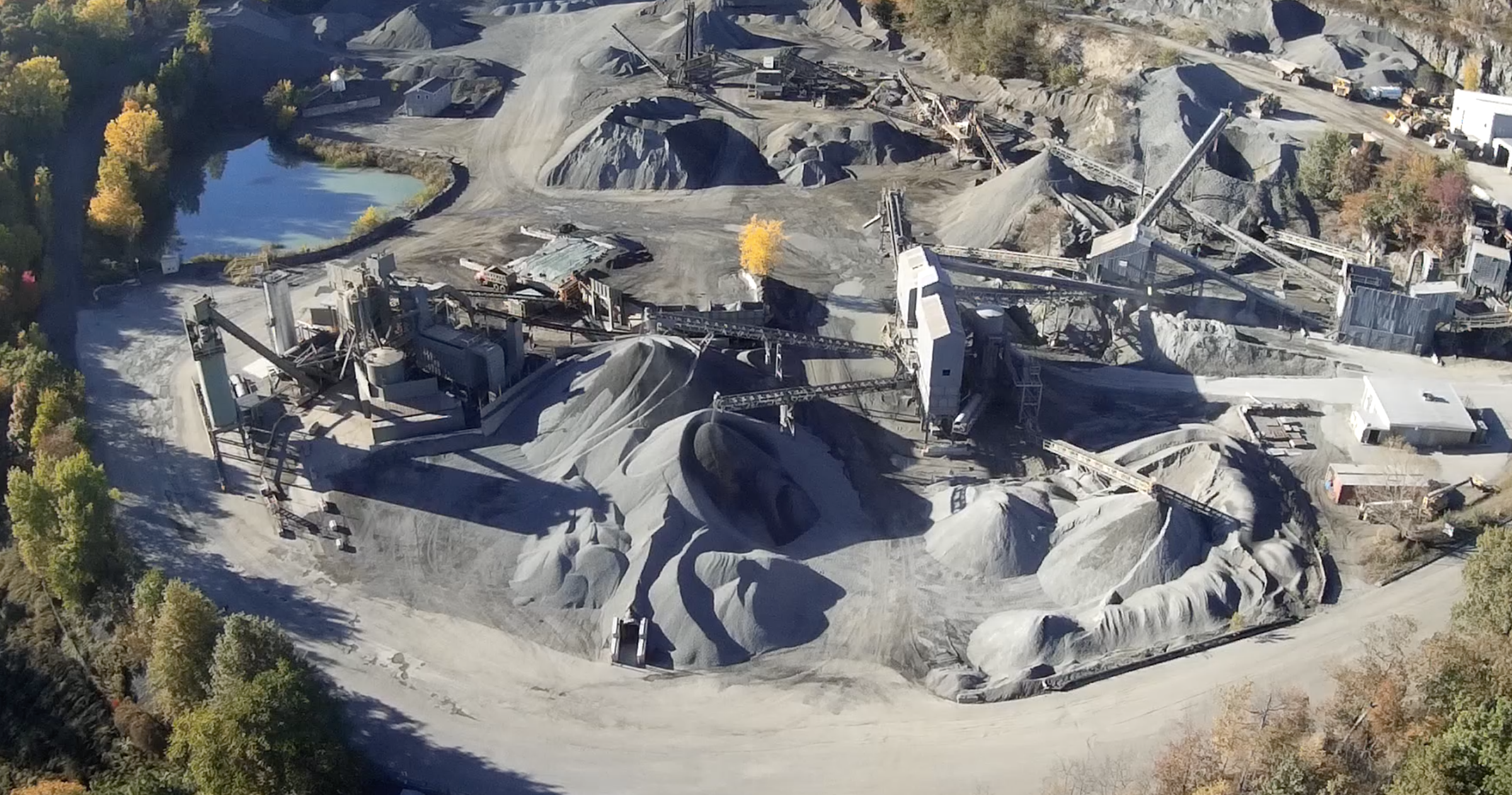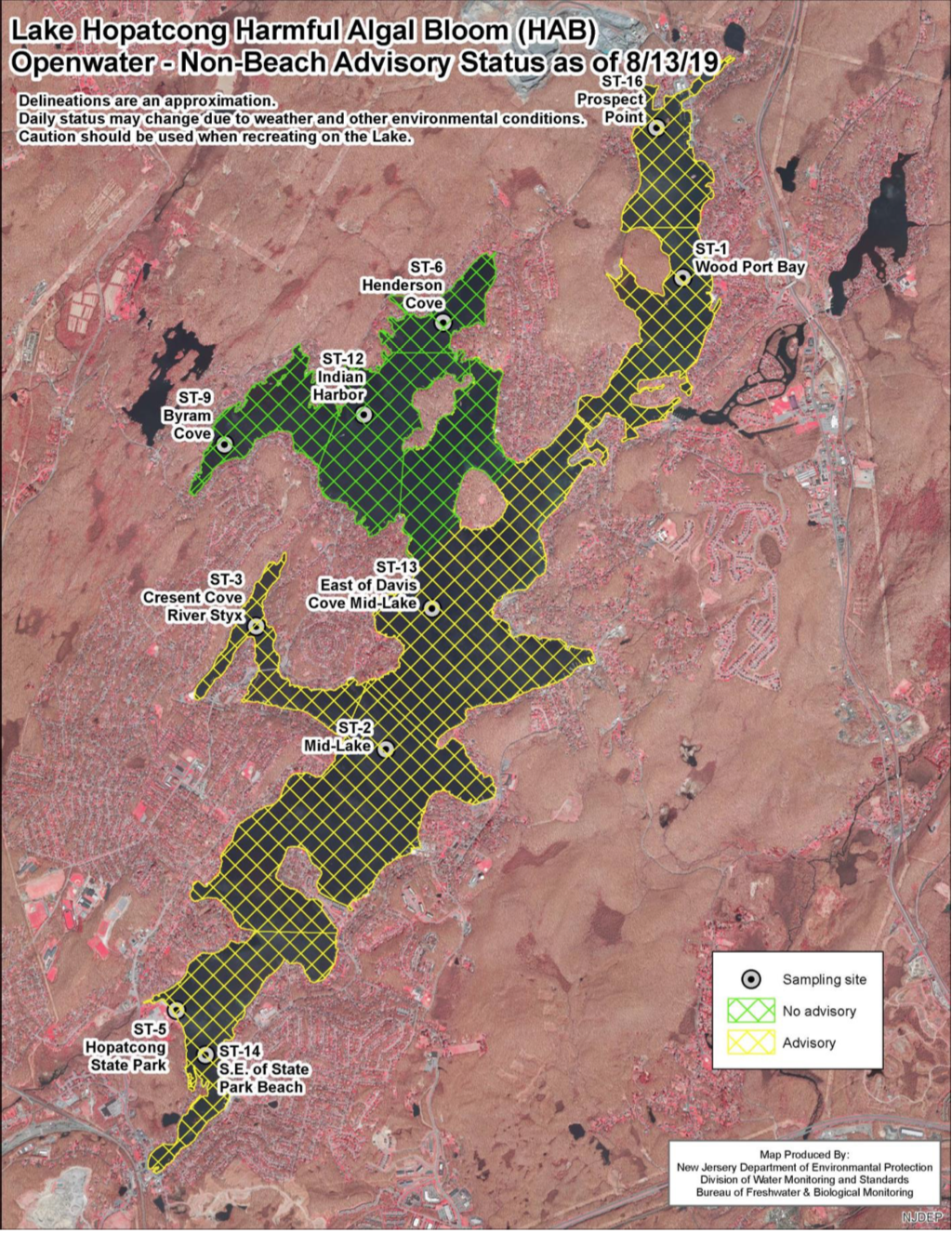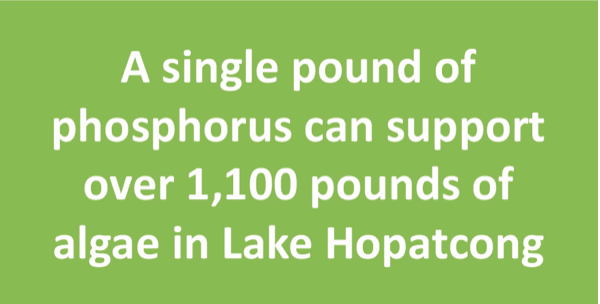The August 19th meeting of the Lake Hopatcong Commission was a regular monthly meeting. In addition to conducting regular business, the Commission received updates from the Lake Hopatcong Foundation, the Commission’s environmental consultant Princeton Hydro, and the New Jersey Department of Environmental Protection (NJDEP). The following is an overview of meeting highlights;
Quarry Investigation
NJDEP provided the following update for the LHC meeting;
NJDEP and Weldon recently completed nutrient monitoring to evaluate the nutrient impact of Weldon Quarry on Lake Hopatcong. The initial data suggests that Weldon is a nutrient source to Lake Hopatcong but at relatively low levels. For example, NJDEP sampled the stream impacted by the February 2019 spill and compared it to two nearby control streams not impacted by the Weldon spill. One of the two control streams was higher for Phosphorous than the impacted Weldon stream. In addition, the active surface water discharge from Weldon had a Phosphorous level of .025 mg/l which is below the Phosphorous TMDL of .03 mg/l for the lake. The highest level of Phosphorous was detected in the sediment behind the turbidity curtain prior to the lake. This sediment was removed by Weldon on 8/16/19 and disposed of off-site as part of the ongoing clean-up. NJDEP plans to continue to evaluate and assess Weldon’s nutrient impact on Lake Hopatcong.

In addition to nutrient monitoring, NJDEP also recently conducted general chemistry and macroinvertebrate analysis. These results were suggestive of some environmental degradation of the stream that Weldon spilled into in February of 2019. For example, the macroinvertebrate population (the foundation for a healthy stream) was rated as “Fair” in the impacted Weldon stream and “Excellent” and “good” in the control streams not impacted by the Weldon spill. Additional parameters that would be associated with a sediment spill including Total Suspended Solids, Total Dissolved Solids and Turbidity, were all notably higher in the impacted Weldon stream than in the control streams.
As a result, NJDEP is continuing to require that Weldon conduct a thorough clean-up of the impacted areas. To that end, Weldon recently added additional hay bales and silt fences (now totaling seven locations) to the stream that will provide additional filtration and sediment collection points. Weldon also recently, as noted above, completed sediment removal in front of the turbidity curtain prior to the lake. The next phase of the clean-up will include a project to remove sediment from a longer stretch of the stream.
The enforcement case pertaining to the violations associated with the February 2019 incident remains open and active.
***Results provided by the NJDEP can be viewed on our Resources Page under Environmental Incidents

HAB Updates
HAB sampling by DEP continues on Tuesdays and Thursdays with results posted to the DEP website on Wednesdays and Thursdays. The DEP’s advisory remains in effect for all areas of the lake except Indian Harbor, Henderson Cove, Byram Cove and Byram Bay to Halsey Island. Based on their data, the DEP/DOH has approved the local health department to re-open the following beaches: as of 8/13 Pebble Beach, Sand Harbor, Bass Rock Beach, Sperry Springs Beach, Beck Lane Beach and CAPP Beach, and as of 8/16, Byram Bay Community Club Beach and Clearwater Beach.
The DEP continues to urge the public to avoid swimming or water sports that may result in contact with the water, such as water-skiing, tubing, canoeing, paddle boarding and kayaking in areas of the lake where the advisory remains in effect. There is no recommended limitation on fishing or passive recreational boating that does not have the potential for splashing. However, fish caught should not be eaten. The public is further advised that pets should not be allowed in the water or to drink it.
Princeton Hydro Cyanotoxin Monitoring
As we did in 2018, the Lake Hopatcong Commission contracted Princeton Hydro to complete cyanotoxin monitoring in Lake Hopatcong during the swimming season. Sampling occurs in July and August. The most recent sampling on August 12th indicates that total cyanobacteria cell counts ranged from a minimum of 28,184cells/mL at CAPP Beach to a maximum of 70,846 cells/mL at the Borough of Hopatcong Beach. All eight nearshore sampling sites had cyanobacteria cell counts that exceeded the NJ Health Advisory Guidance Level for cyanobacteria cell counts, which is 20,000cells/mL. Results of cyanotoxin monitoring for all eight sampling stations indicated concentrations were either negative or below the Draft Recreational Health Advisories set by the NJDEP. Additional information can be found in the August 16, 2019 memorandum from Princeton Hydro.
HAB Response
The Lake Hopatcong Foundation has organized two meetings with municipal mayors, Princeton Hydro and the Lake Hopatcong Commission to discuss short-term and long-term initiatives to address the harmful algal bloom and prevention of subsequent HAB events on Lake Hopatcong. The collaborative efforts of the group to present a unified approach to HAB management is expected to strengthen our approach and any recommendations that are made to NJDEP.
Mayor Francis of Hopatcong and Mayor Wilsusen of Jefferson indicate that they are revisiting the proposed installation of municipal sewers. Hopatcong is seeking funding for their proposal of extending sewers along Hudson Avenue, which would bring an additional 50 homes online. This strategy will also circumvent the issue of running sewer lines across River Styx bridge. The Borough is also working to reinstitute their septic management plan. According to studies, proper septic management can reduce phosphorus loading by 10-30%. Jefferson is revisiting their 2002 sewer study and investigating proposed costs and possible sources of funding. Jefferson will be meeting with the Highland’s Council to discuss whether sewers are permissible in Lake Shawnee, which falls in the preservation area of the Highland’s Area. If the Highland’s Council and NJDEP are unable to issue a waiver allowing the installation of sewers in Lake Shawnee it will be difficult for the project to proceed. Both Roxbury and Mount Arlington are sewered around Lake Hopatcong. The NJDEP is investigating options for connecting Hopatcong State Park to the municipal sewer system.
All four municipalities and the counties are working to address stormwater catch basin cleanouts as well options for retrofitting select catch basins with filters to remove dissolved phosphorus before stormwater enters Lake Hopatcong. Stormwater devices within the watershed total more than ten thousand, so prioritizing the catch basin retrofits that will provide the greatest impact on lake water quality is important.
The State of New Jersey, Department of Environmental Protection requested proposals for in-lake management of HAB’s. As a result, both Princeton Hydro and the Borough of Hopatcong have submitted in-lake demonstration projects to NJDEP. The projects are intended to address blue green algae in the lake through techniques such as aeration, oxidation, circulation, alum treatment and wetland islands. All proposals are currently under review by the NJDEP. Additionally, Princeton Hydro is working with the Highland’s Council to identify beaches for restoration plans. Dr. Lubnow provided an overview of internal phosphorus load that originates in the lake bed and external phosphorus loading that comes from the watershed. Princeton Hydro has data on oxygen levels in the lake over the past 20 years. In the 1990’s they developed a model of the internal nutrient load for Lake Hopatcong. Based on this data, Dr. Lubnow indicated that most of Lake Hopatcong’s phosphorus load is external and washes in from the surrounding watershed. In contrast, he estimates that only 7% of Lake Hopatcong’s phosphorus is internal or within the lake sediment. This is why Princeton Hydro has recommended projects that reduce the amount of phosphorus entering the lake such as stormwater management, septic management, sewer installation, a reduction in the use of fertilizers, goose management, and picking up after pets.
Lake Friendly Living
Looking for ways that you can reduce your impact on the lake and protect Lake Hopatcong? The Lake Hopatcong Foundation has posted their lake friendly living guide with tips to reduce your nutrient load.
Princeton Hydro’s PowerPoint Presentation on Stormwater Management for Lake Communities
Rutgers Water Resources Program – Information on Rain Gardens


Weed Harvesting Update
Four large harvesters and one small harvester are on the lake for the season. Currently equipment and dump trucks are stationed at Lee’s County Park and East Shore Association. The Harvesting Program is currently in Phase 3 and will cover north of Nolan’s Point to Brady Bridge Halsey Island, Raccoon Island, and Byram Cove. Fridays the harvesters are focused on cleaning up floating weed debris. The MUA has requested additional testing of weeds prior to disposal, so the DEP has contracted with Hampton Clarke to collect samples. Until sample results are received the weeds are being disposed of at the Sussex County MUA at a more expensive tonnage rate.
Sealed bids are due this week for the State Park office roof repairs, once roof repairs are completed the mold in the Commission office & State Park building can be addressed.
Weeds harvested between mid-May and August 14, 2019 total 744 cubic yards.

